David Angel tester Olympus E-3

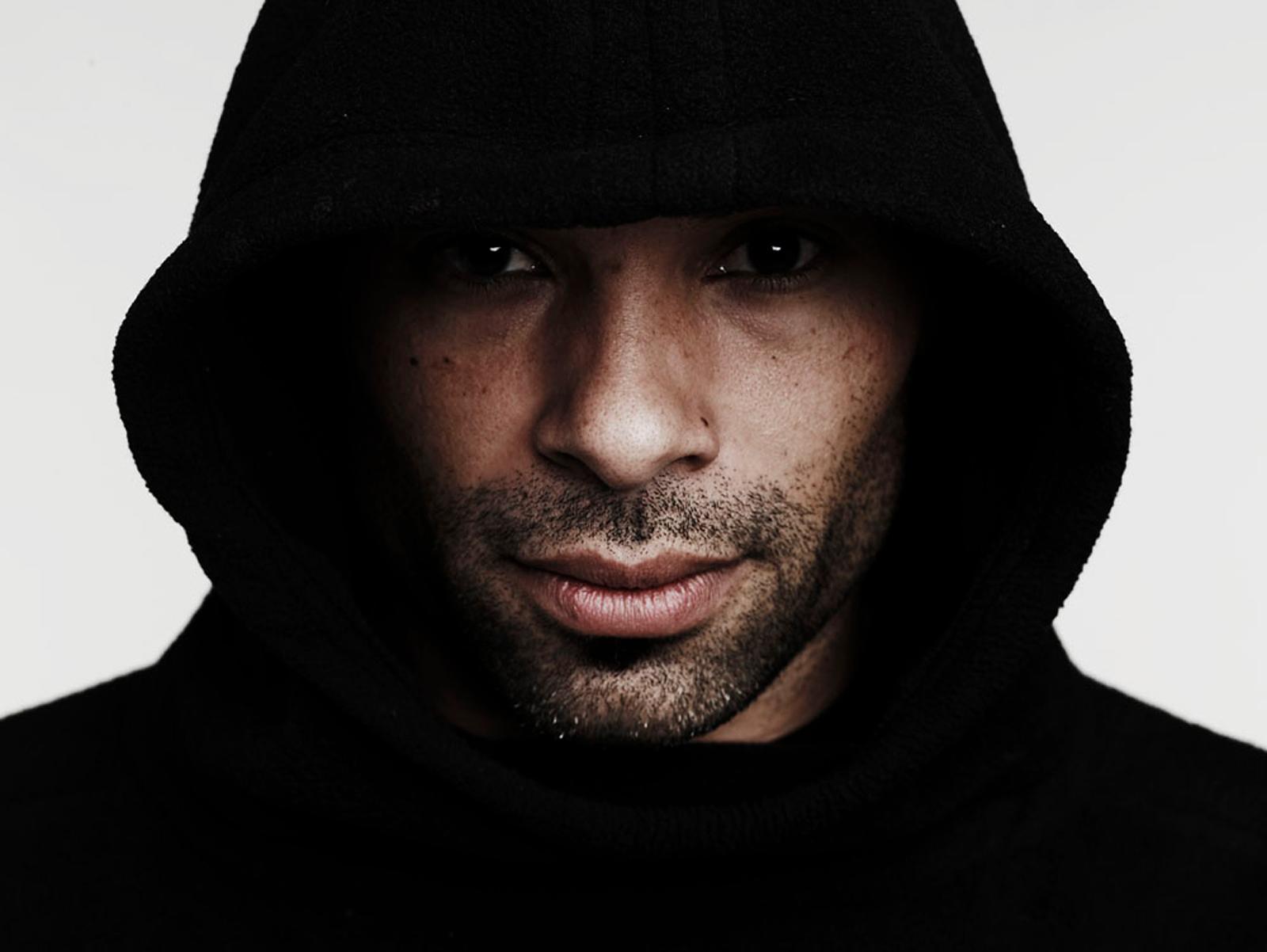
Dette er første artikkel i vår nye serie der David Angel tester proffkameraer for Akam. Du kan lese mer om David Angel i denne artikkelen. Akams tidligere test av Olympus E-3 finner du her.
The advent of digital photography created unwanted growing pains for stalwart medium format camera manufacturers like Hasselblad, Mamiya and Contax (Though Hasselblad was able to keep pace with Canon and stay ahead of other medium format manufacturers with the introduction of the H1 and the purchase of Imacon). They were slow to react in the professional market and forced to compete head on with the cheaper, faster, full frame 35mm CCD Canon 1Ds. The reason was simple. Canon is not only a camera company but a technology company as well. So too is Olympus and the recently released E3 is a major step forward for the company, allowing it to stand head and shoulders with rivals Nikon and Canon.
The current generation E3, will never replace the Canon 1Ds Mk III or Leaf AFi, as a first choice camera for professionals shooting large ad campaigns, fashion or celebrity editorial. And nor is it intended to. The E3 is strictly a prosumer camera that leans right of the "prosumer" tag and is perfectly suited to handle weddings, events, travel, sports and e-commerce photography.
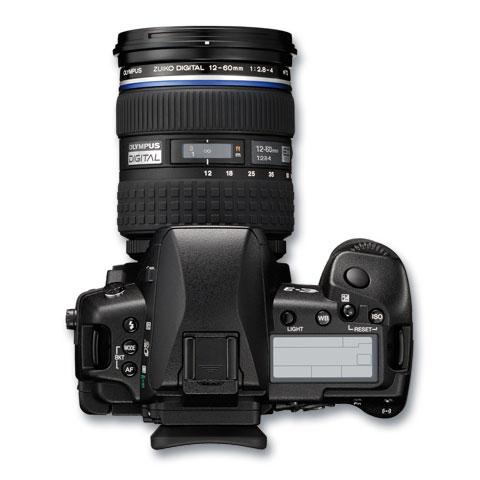
Ergonomics and functionality
When picking up a camera for the first time, regardless of brand or cool factor, the first thing any one should be concerned with is, "how does it feel?" This is purely subjective of course but nonetheless very important. In college, I made the mistake of buying a Mamiya Pro TL without familiarizing myself with it first, simply because my professor said I should have one because it worked for him. Needless to say, I wasted quite a bit of money on a camera that, for me just didn’t feel right. It never felt balanced with the motor grip and never felt comfortable without it. I was stuck with a great camera I didn’t like.
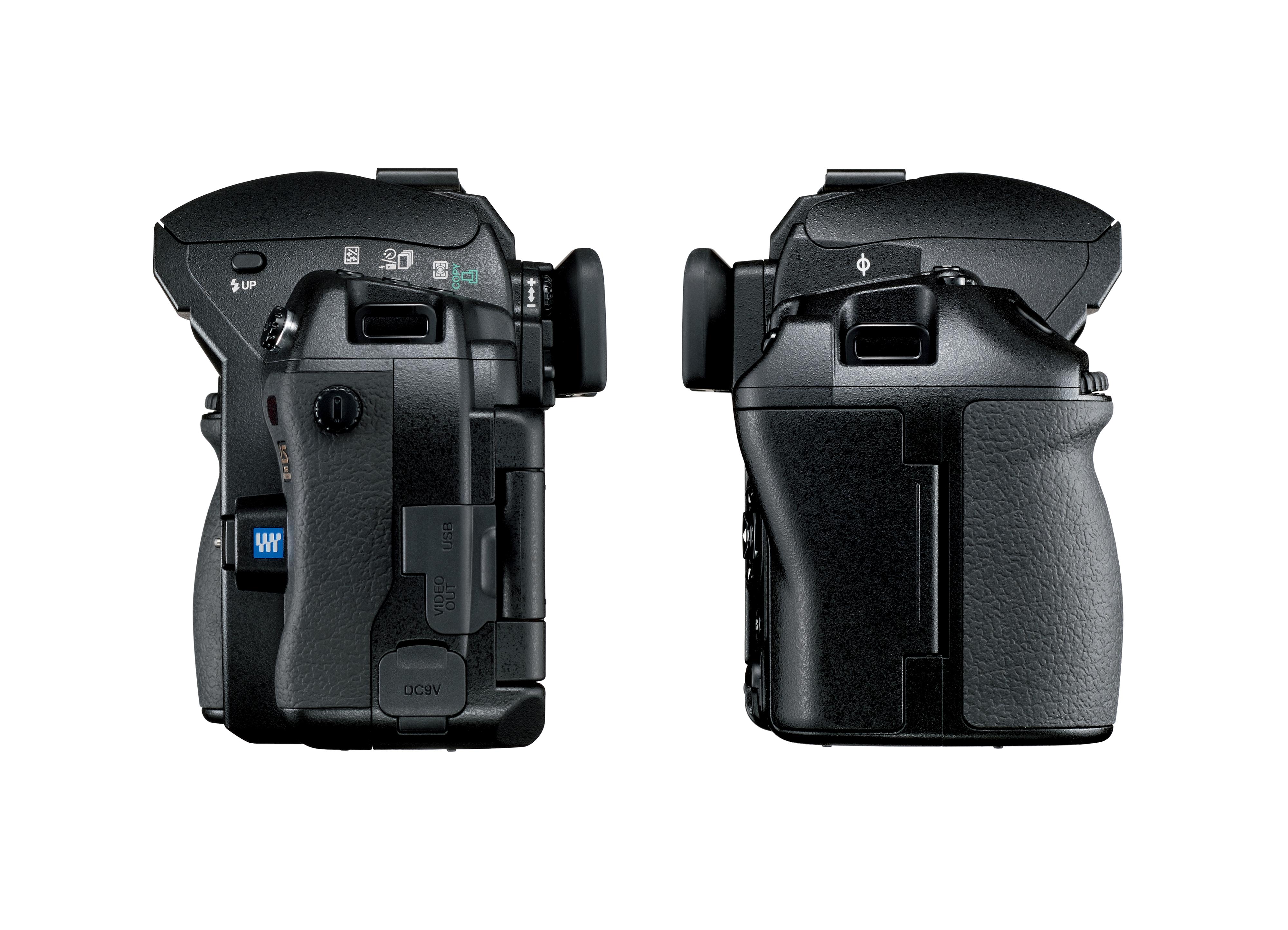
My first impression when holding the Olympus E3, with its solid magnesium body and soft rubber grips was that it felt particularly substantial for a camera in its class. The Sony A700, Canon 40D and Nikon D200 don’t feel nearly as expensive. However, the E3’s dimensions were a bit too small and the ergonomics oddly placed to feel comfortable in my hands. The E3 does not have an easy to use mode dial, forcing you to change camera modes with two buttons. This two-button philosophy led to some frustration when changing the focus points as well. In order to do so, your thumb has to climb the top right corner of the body to activate the focusing matrix and then back down again to the four-point controller to adjust. This is one too many steps. It inherently counteracts Olympus’ highly touted "world’s fastest" auto-focus because if you’re wasting time trying to get the right focus point, you risk losing the shot. Changing the focus mode from single point to multi point is even more awkward, also requiring a two-fingered operation. Unfortunately, most of the camera’s functions are designed this way so as not to accidentally change camera settings. In theory this is great but with everyday use it becomes quite cumbersome. With that said, I’d like to sing Olympus’ praises for fitting the camera with an 11 point focusing system. The Canon 5D has only 9 focus points and aren’t as well placed. Not to mention, the Olympus E3 has superior low light focusing ability but costs much less than the 5D.
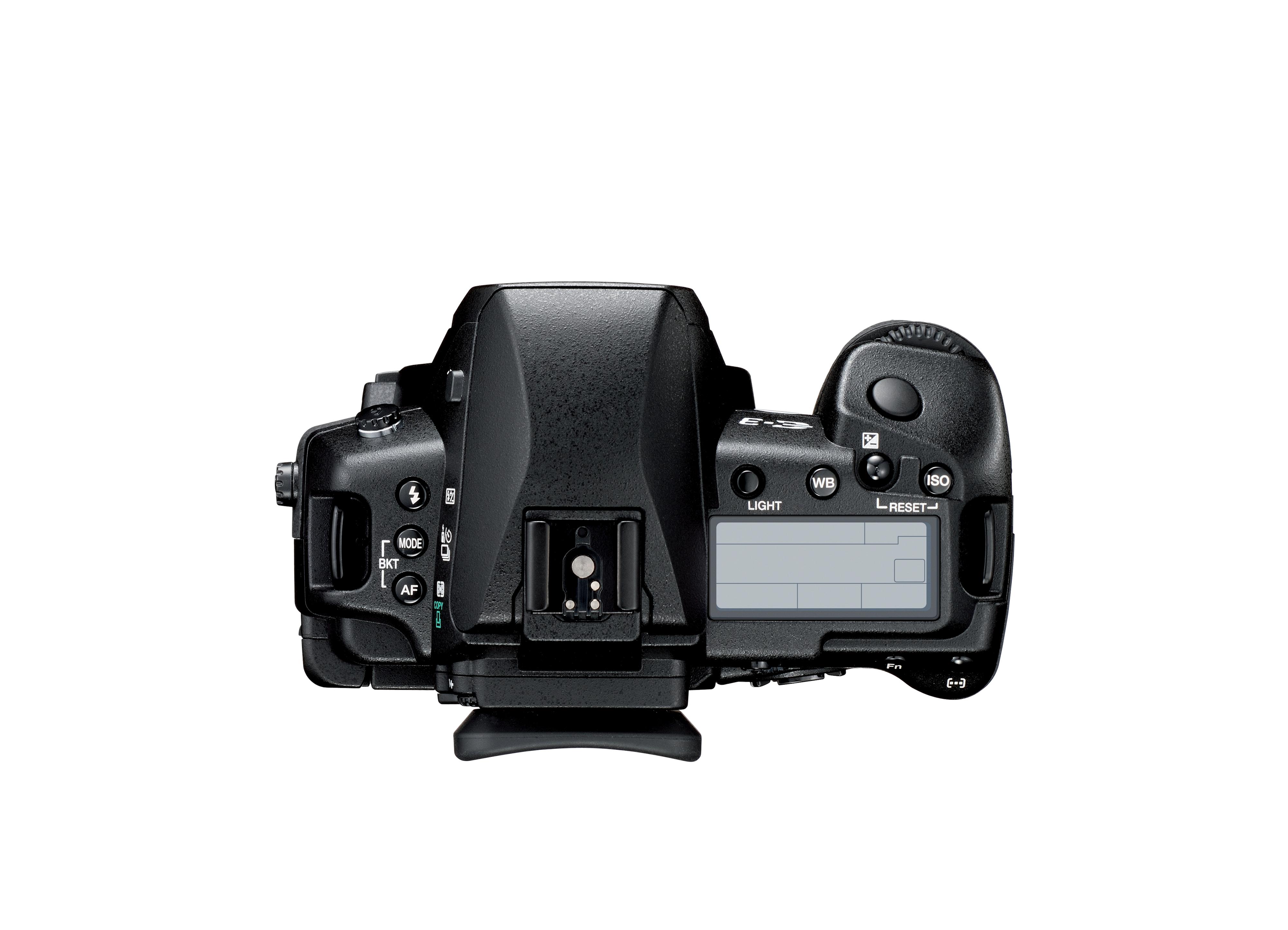
An often-overlooked area with digital cameras is menu functionality. For any pro, the ability to format a flash card should be a simple, straight forward affair and Olympus was smart to present this as the first option in the menu. Overall, I found the menu system less intuitive compared to the 40D but simpler and easier to use than the D200. This can be a big issue when shooting in a situation where quick menu driven adjustments are required.
One last note, the eyecup on the E3 came off or loosened up repeatedly. No small thing and very annoying for a camera costing this much. The E3’s design is meant to be tough enough to handle any situation, except maybe hanging off your shoulder.
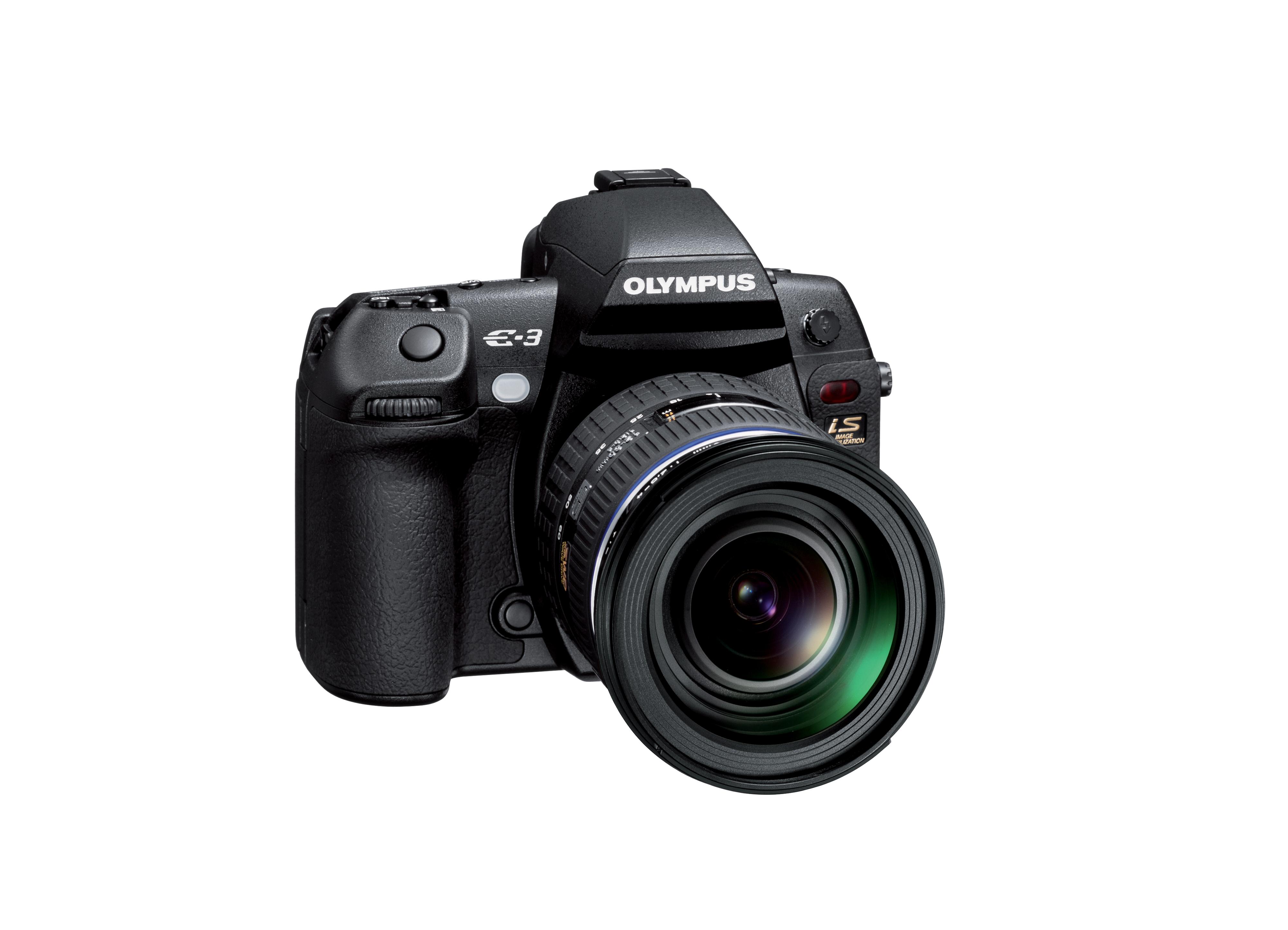
Features and specifications
Much like the computer industry jockeys to claim the fastest Gigahertz and soon Teraflop processor speed, digital camera manufacturers are constantly touting megapixel count as the defining feature of camera superiority. This is purely marketing. One should consider the application of the camera and the end use of the images shot. For example, I was on an advertising campaign and the client insisted a 39 Megapixel back be used because in his mind, 39 MP was more and therefore translated into a better image. It was unnecessary because the images were only being used for the web and were never going to be used for print. Secondly, we were shooting kids with animals and the 39 MP back was just too slow and couldn’t keep up with the spur of the moment reactions of both the kids and the dogs. A faster camera with a smaller megapixel count like the E3 would have been the better choice.
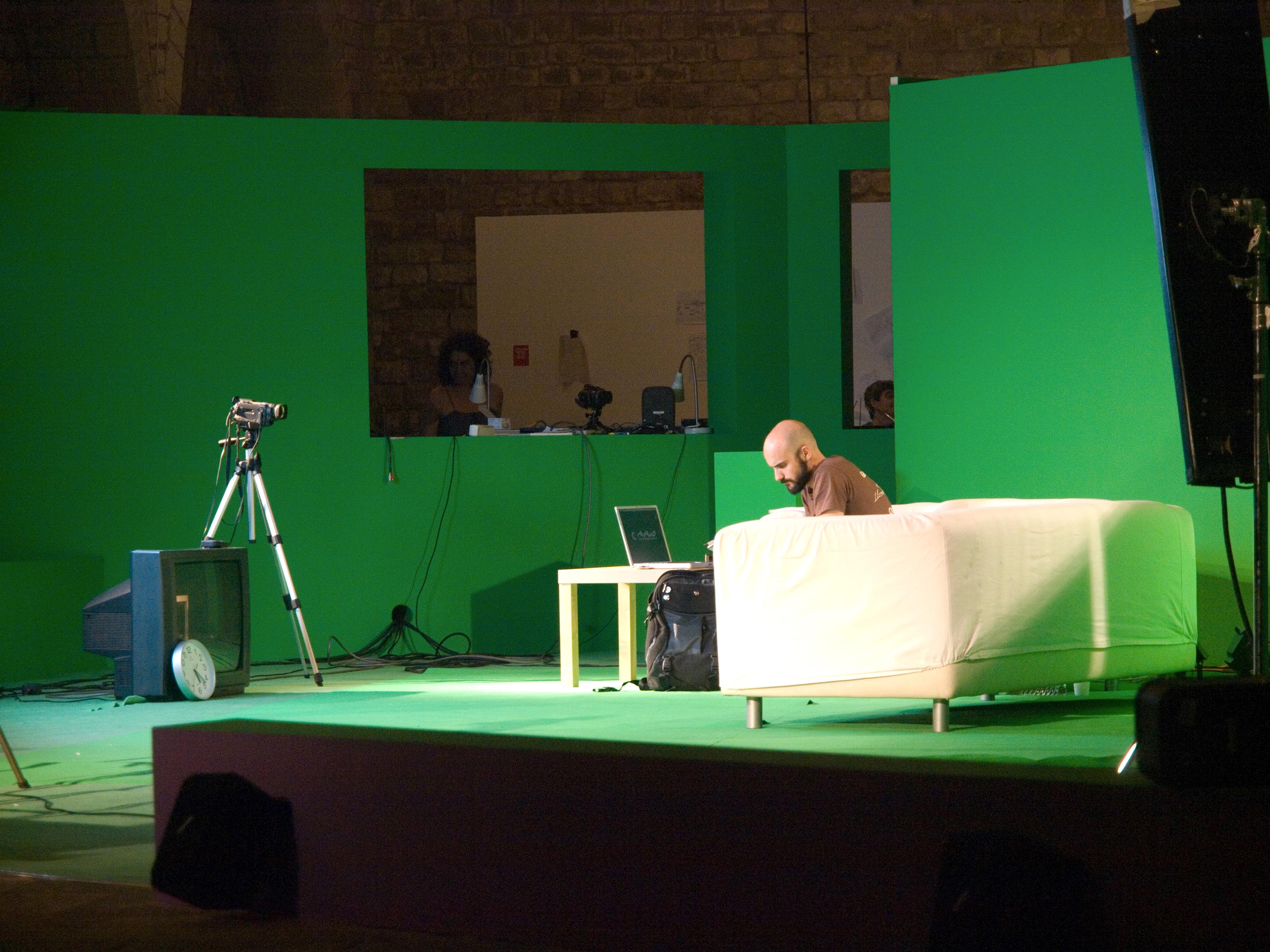
1600 ISO
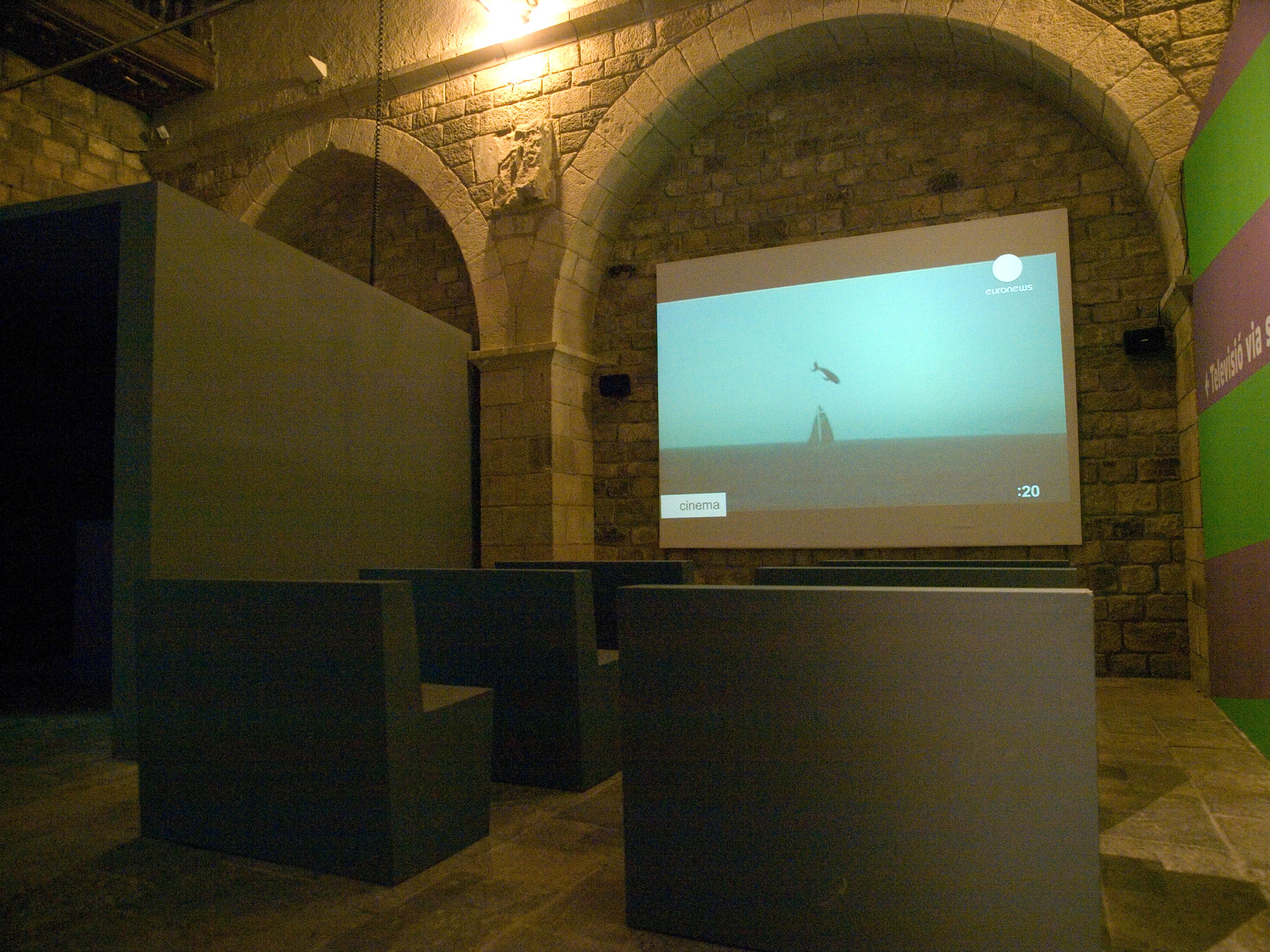
3200 ISO
The E3’s 10.1 Megapixel CMOS sensor is more than enough for any newspaper or sports magazine publication. It renders colors beautifully in the lower ISO range and the camera’s white balance is superb. The ability to rate color temperature in Kelvin is a nice professional touch as well. However, a major drawback from a professional standpoint is the CMOS sensor is not full frame. A 2x lens conversion factor, in my opinion is too high. The smaller chip is what gives the E3 amazing speed but I prefer to work with a full frame chip because all things being equal, the larger chip gives you more surface area for the 10.1 Megapixels, thus resulting in a better image. Furthermore, buying one set of lenses for current and future generation cameras is much easier when you know there will be no change in lens conversion factor. The up side is the E3’s 4:3 proportional sensor and the viewfinder’s 100% field of view, trump the competition.
The 1/250th external flash sync speed (a minimum for professionals) is fantastic. The same can’t be said with the Canon 5D, which syncs at 1/125th. Even the Canon 1Ds MKII could only sync at 1/200th, which made no sense because it was supposed to be a professional’s camera.
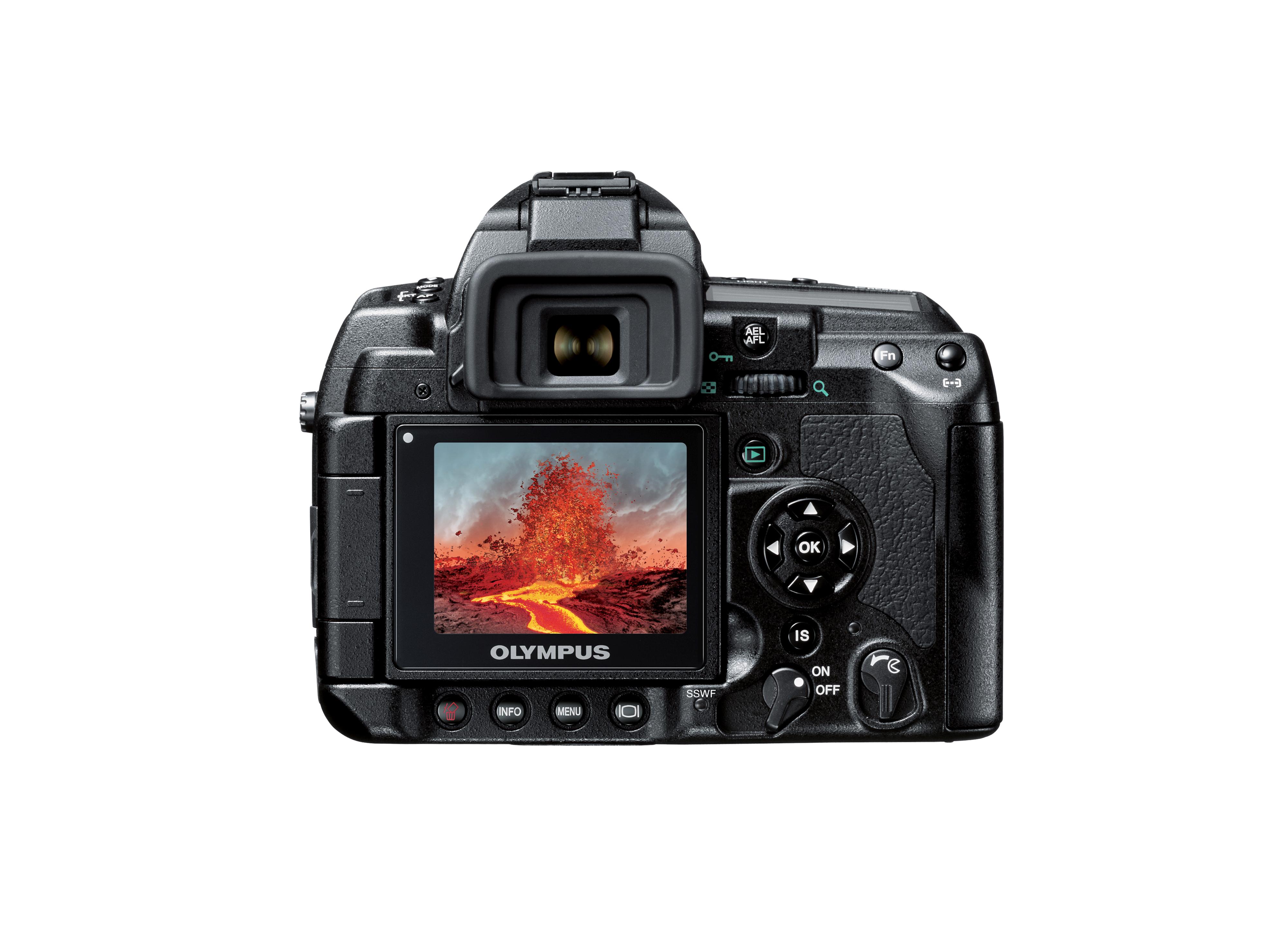
Live View is fast becoming a must have feature with digital 35mm and even medium format cameras backs. I’m being facetious here but photographers have been using "Live View" for over 150 years... with their eyes. In reality, the technology really only comes in handy if you are doing product or food photography. In that case, while your assistant(s) make minor adjustments to the shot you can direct them without putting your eye to the viewfinder. But most professionals would look through the viewfinder or shoot a frame and look at it on a large monitor to really “see” what’s going on anyway.
For those that like to avoid getting dirty, using the Live View feature along with the E3’s 6.35cm swivel LCD is a godsend. But let me say this, getting dirty and rolling around on the ground is half the fun of being a photographer sometimes. The ability to swivel the LCD panel against the body adds to the E3’s impact ruggedness but also makes it susceptible to breaking with repeated use. I would have preferred a larger fixed panel LCD without the needless Live View feature.
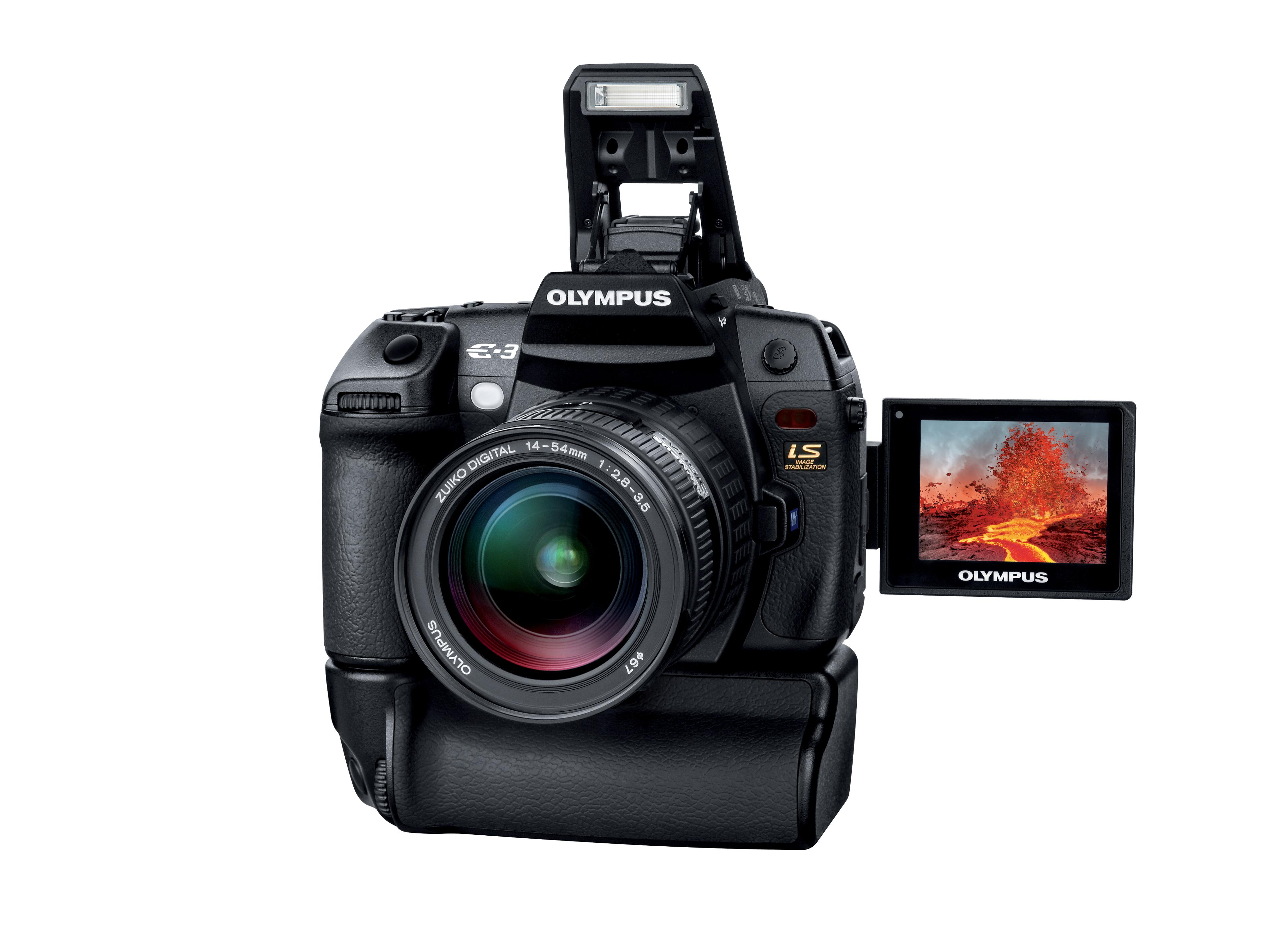
The E3 accepts both CF and SD flash cards. This is a nice feature for consumers but in my experience, I’ve never been on a shoot as an assistant, digital tech or photographer and used SD cards. That’s not to say using SD cards is bad for karma. So if purchasing an E3 is your first foray into the digital SLR market and all you own are SD cards, go ahead and use them.
Image quality - lens





The picture quality was good in the lower 100-800 ISO range. The E3’s color representation was smooth and even with very little noise. I happen to like a little noise as long as it passes for film grain. I frequently rate my 35mm camera at 400 ISO to add a little “texture” to the image. In the upper ISO range however, I noticed minor banding and color blotchiness in the shadows at 1600. The picture became downright dreadful when the camera was rated at 3200. There was a lot of color noise, shadow blotchiness and severe banding throughout the image. Shooting at 1600 and above is usually reserved for black and white photography anyway, so I converted the RAWs to B&W but the noise didn’t resemble traditional film grain and the banding was still just as noticeable. Olympus would have been better to limit the camera’s rating to 1600 than to claim true 3200 ISO capability.
Regardless of the CMOS sensor’s shortcomings, the 12-60mm SWD 2.8 Zoom lens is truly fantastic. The “Supersonic Wave Drive” marketing lives up to the hype because this lens focuses tremendously fast, even in very low light situations. The lens also permits you to get extremely close up and still focus. I prefer to use prime lenses but if I could only purchase one lens for the E3, this would definitely be it.
Camera software
The Olympus Master 2 editing and file management software was pleasantly intuitive and easy to use. This isn’t the case with most manufacturer software. The only drawback was that it was slow in performing simple operations like selecting a photo. As a professional, I would be more inclined to use Capture One or Adobe Lightroom but Master 2 is more then adequate for any novice or non-professional.
Expandability
When purchasing a camera, one should also consider that you are buying into the entire manufacturers system. Therefore, take the time to research the type of lenses, whether you need an on camera flash and how many accessories are offered. Olympus offers a vertical grip that houses an extra battery. This is a great option that makes holding the camera for vertical framing over extended periods much more comfortable.
Overall
The Olympus E3 is a great value or as we like to say in America, "It has great bang for the buck." Just like no single car can be all things to all people, the same is true of cameras. Short product cycles resulting in dramatic price reductions, unannounced rebates and many options across every line of manufacturer can make finding the right camera for the best value a full time job. The 12-60mm SWD lens mated to an E3 body make it an ideal choice for those buying their first SLR camera who want a system they can grow into or for the more experienced who need a rugged, everyday travel camera with a wide range of options to last them beyond the next product cycle.
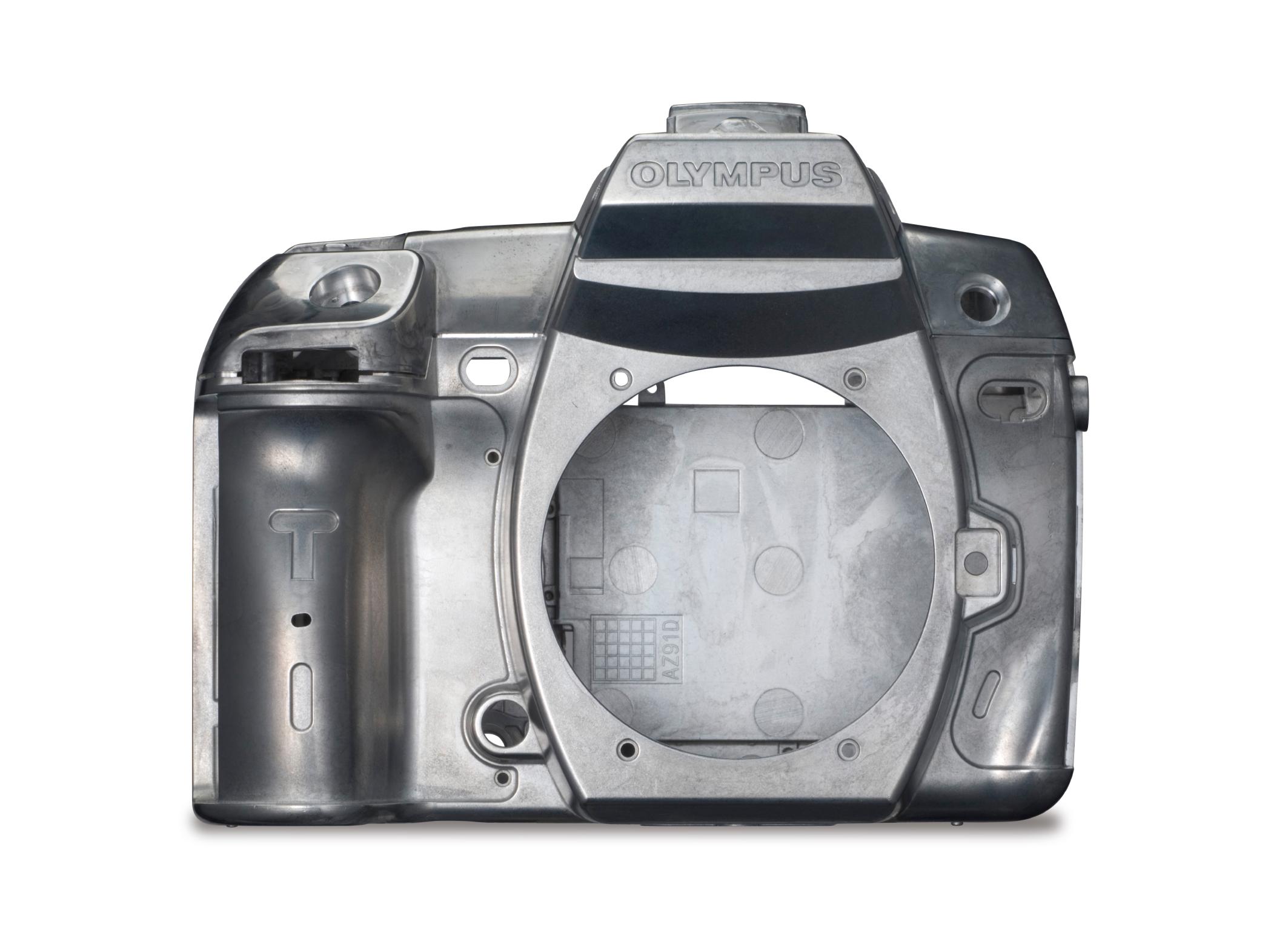
Other cameras offer relatively the same options for less money but don’t have the same level of wheatherproofing, autofocusspeed or kick butt magnesium body. Considering what most full featured digital SLRs cost these days, the magnesium body alone is worth the extra money to protect your investment.
Once you get used to the oddities of the Olympus E3’s two-button menu system, the E3 is like an old friend…always there for you. But remember this, no matter what camera you buy: "It’s not the camera that makes the photographer but the photographer that makes the camera."
